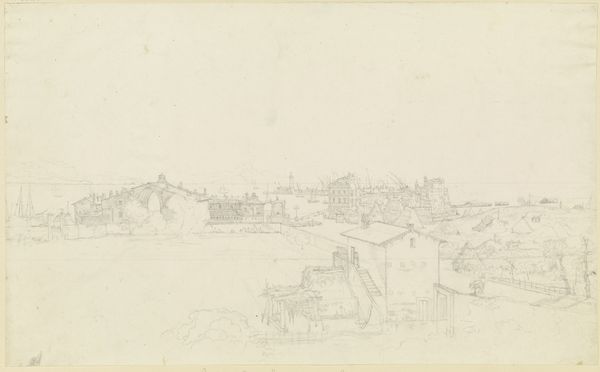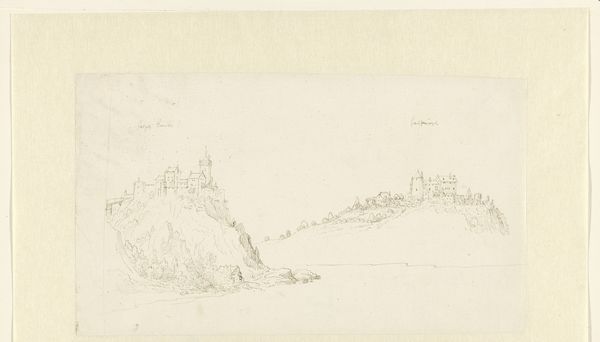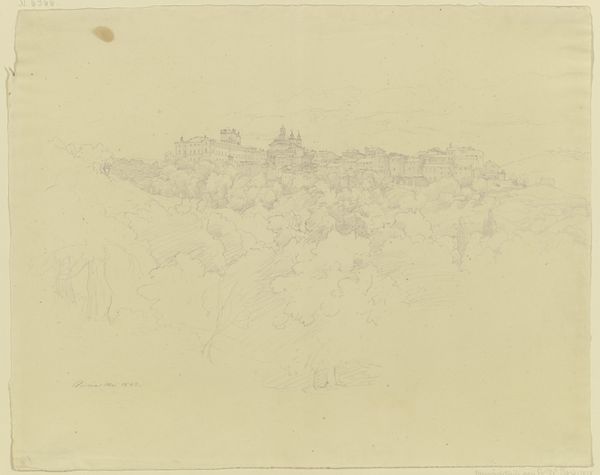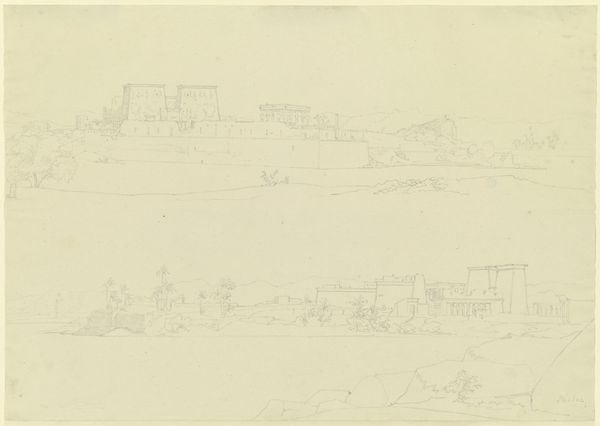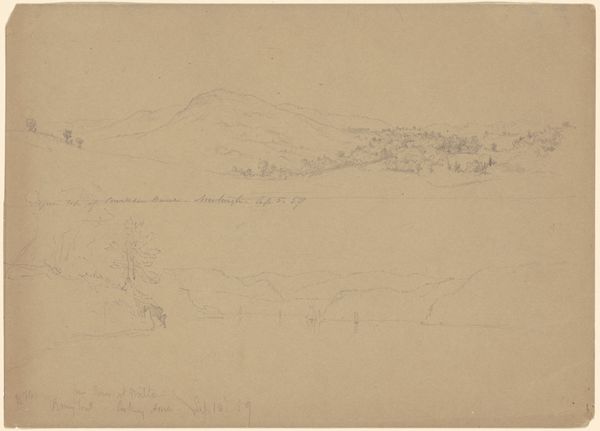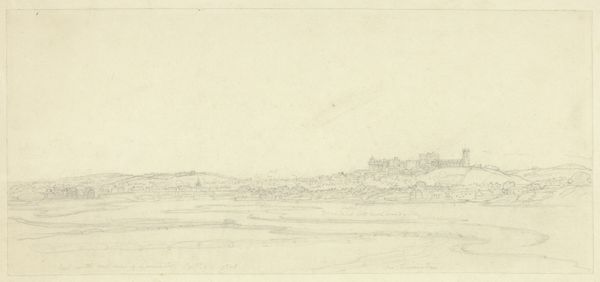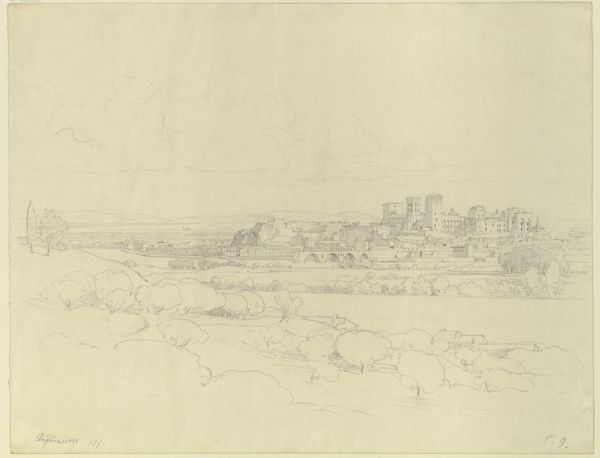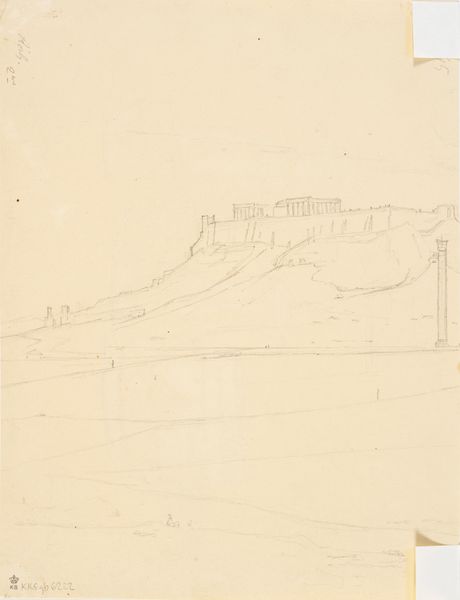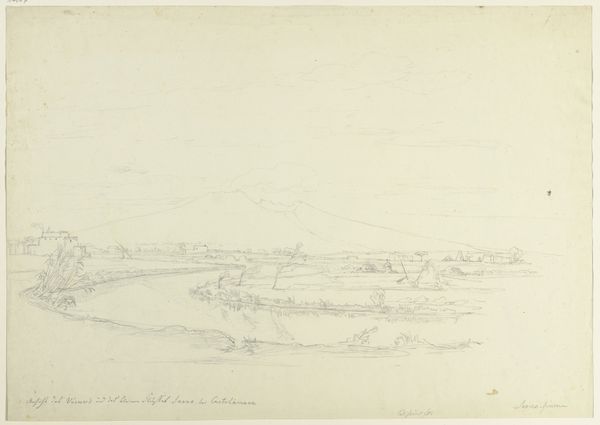
Copyright: Public Domain
Curator: There’s something incredibly poignant about this pencil drawing, "Ruins near Kuum-Ombos" created circa 1829 by Friedrich Maximilian Hessemer. It’s like a whisper of history barely etched onto the paper. Editor: A whisper is right! The faintness of the lines, the vast emptiness around the subject… it conveys such a palpable sense of loss and impermanence, doesn't it? As if memory itself is fading. Curator: Precisely. Hessemer, during his travels, seems less interested in grandiose depictions of ancient power and more attuned to its gradual disintegration. Ruins, of course, held potent symbolic value for Romantic artists. Editor: Yes, ruins as symbols. Here, the fallen structures could symbolize the inevitable decline of civilizations, mirroring anxieties present during a period of massive upheaval after the Napoleonic era. But it goes beyond simple symbolism; the depiction has social relevance to the understanding of historical events. Curator: Definitely, especially considering the rising trend of Egyptology at the time. It is quite interesting how Hessemer seems to capture both a respect and an elegiac attitude toward it all. Those crumbling walls and pillars suggest the ravages of time, while the starkness evokes the scale of human endeavors laid to waste. Editor: Looking closer, you can discern certain architectural elements which must have had powerful associations for contemporary viewers steeped in classical ideals. The ruins aren’t merely rubble; they represent an attempt to grapple with the passage of history. This speaks to the public fascination and rising engagement with distant eras, and a societal investment in history as spectacle. Curator: Indeed. It allows one to consider the role that the artwork plays within that context. Consider how its monochrome rendering, far from being limiting, emphasizes form and the contrast between light and shadow. This elevates the emotional resonance of a place once teeming with vibrant life. I see in the subtle details, too, that Hessemer is communicating universal ideas about memory and resilience. Editor: Ultimately, this delicate drawing captures a historical narrative and an emotional understanding about history. Hessemer presents a scene frozen in time, forcing a consideration of time and history, ruin and rise, but also about our relationship to that continuum. Curator: An engagement with a cultural heritage that invites thoughtful consideration of ourselves, of then, and of now. A journey, indeed!
Comments
No comments
Be the first to comment and join the conversation on the ultimate creative platform.

